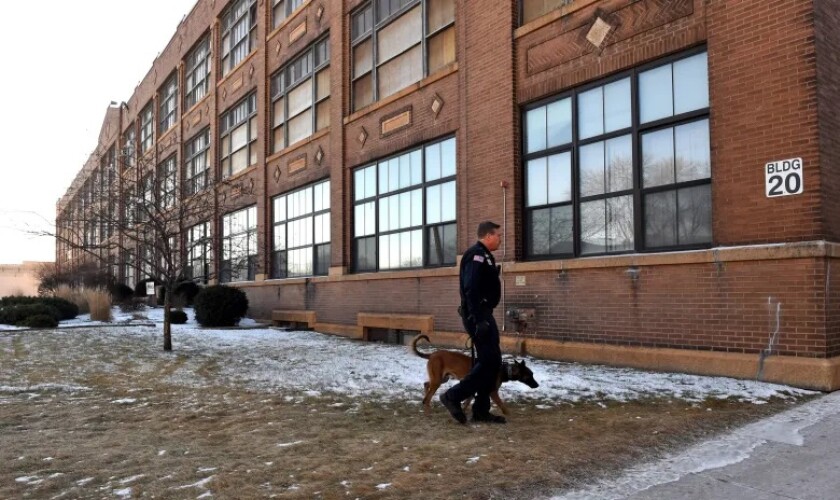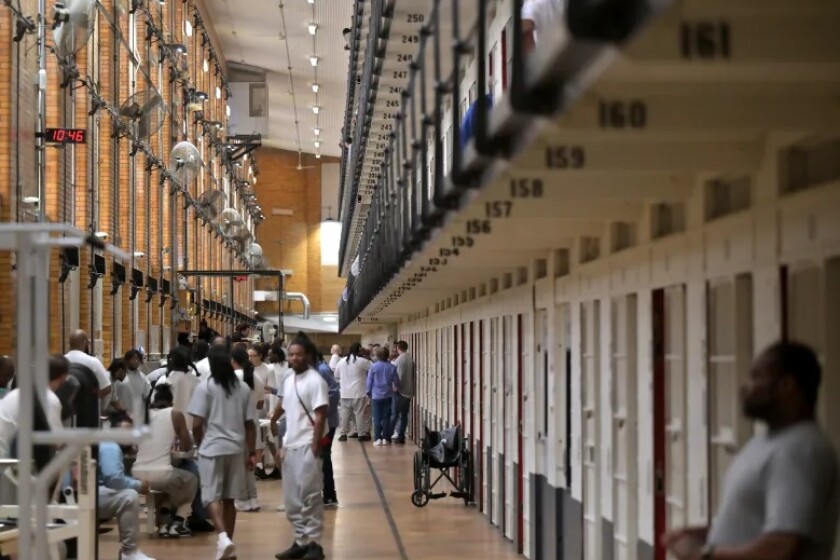BAYPORT, Minn. — State leaders have agreed to a “phased closure” of the Stillwater state prison which will be completed in 2029, citing safety and costly maintenance concerns at the historic facility.
The effort will end state investments in the aging facility and eliminate safety concerns at the prison for both staff and inmates, Paul Schnell, state corrections commissioner, said during a press conference Thursday, May 15.
ADVERTISEMENT

The closure is expected to be completed in two phases upon passage of the public safety omnibus bill at the Legislature. The first phase involves reducing operations and staffing over several months, moving inmates to other facilities, and conducting studies on logistics, closure impacts and the site’s long-term future. The second phase begins in July 2027, when the site will be vacated. Full closure is expected by June 30, 2029.
The phased closure over time will result in annual state savings of more than $40 million, according to state officials.
Gov. Tim Walz weighed in on the closure at a news conference on a budget agreement announced by state leaders Thursday at the Capitol.
“It’s 111 years old,” he said. “There have been constant issues around the inability to provide safety towards the staff and safety towards the incarcerated individuals. The deferred maintenance that needs to be done to keep Stillwater even operational is becoming unsustainable.”
Safety and maintenance
The maximum-security facility for adult male felons dates back to 1851, though the original facility was replaced in 1914 due to overcrowding. There are currently 1,171 inmates at the prison.
Deferred maintenance needs at the facility — one of the oldest in the state — are estimated to cost $180 million, with a full modernization or replacement of the site costing an estimated $1.3 billion, according to officials.
ADVERTISEMENT
Despite the efforts of staff to continue operating the facility, conditions have deteriorated to a point that compromises safety, efficiency and operational integrity, and its continued operation reflects a growing liability for the state, Schnell said at a press conference Thursday.
Roughly 100 inmates held a sit-in at the prison in 2023, protesting its conditions and sending the prison into lockdown for more than a day, the Pioneer Press reported at the time. The building has no central air, and there are issues with its windows, energy efficiency, heating and plumbing, and other maintenance needs, Schnell said.

Officials do not see any immediate safety issues with the facility, Schnell said, and it will continue to keep around 500 beds open for the next two to three years during the transition.
“Literally on an annual basis, we’re investing tens of millions of dollars in deferred maintenance money into that facility, and at some point in time, a decision has to be made to move away from this,” he said.
St. Cloud’s state prison, another one of the state’s oldest correctional facilities since it opened in 1889, is estimated to have a cost of around $750 million to bring its infrastructure up to modern standards, Schnell said.
Due to the facility’s age, design and safety issues, he said, it takes more staff to operate.
Currently, the facility has around 565 staff members, and staff reductions are expected, though officials will still need to determine the extent, Schnell said. Factors such as retirements at other facilities and bumping rights will need to be considered, he said.
ADVERTISEMENT
Inmate transfers
Around half of the inmates at Stillwater prison will be transferred to the Department of Corrections’ nine other male facilities, while others will remain at Stillwater as operations are reduced in phase one. There is also the possibility that inmates at other facilities will move to Stillwater during the phased closure.
It is expected to take weeks before officials will begin transferring inmates, with placement decisions to be made based on security classification, program offerings and inmate health care needs, according to Schnell.
“So a staff contingent made up of capacity management folks as well as people, wardens from across the system will begin to look at classifications, security classification levels, of different incarcerated people in the facility, and begin to make those transitions based upon their needs and the facilities that we have open beds that can meet those individual needs,” he said.
The facility was put into a lockdown state Thursday, which is common in instances like this, Schnell said.
“Part of this is so we can communicate with staff. Part of this is so we can communicate with the population,” he said. “And we know that that transition to different facilities, even for incarcerated people, will be, in some cases, challenging. There are people who would like and would prefer to stay in Stillwater, as opposed to be transferred to another facility.”
Union response
Labor union leaders representing correctional officers and staff in the state department of corrections are asking state leaders to stop the proposed closure due to concerns that it risks the safety of the public, correctional staff and inmates, according to a Thursday release.
“This is not just a prison — it is a vital institution in Minnesota’s corrections system,” Bart Andersen, executive director of AFSCME Council 5, said in a statement. “The proposed closure of the Stillwater Correctional Facility undoubtedly puts lives on the line, overcrowds other facilities, destabilizes our system, and may unjustly displace hundreds of dedicated workers and their families.”
ADVERTISEMENT
Union leaders could not be reached for comment by the Pioneer Press on Thursday.
What happens next
The long-term future of the facility, which has historical designation, is still to be determined. Facility consolidation is happening around the country, with it being the most cost-effective way to manage aging infrastructure, Schnell said.
“I want to be crystal clear that Minnesota has to have prisons. We have to have accountability. It is a core and central public safety measure,” he said. “But we also have to be smart about those facilities, because 95% of the people in them are going to get out, and it is in our collective best interest to ensure that they come out better than when they went in. And facilities play a role in that.”
Alex Derosier contributed to this report.
____________________________________
This story was written by one of our partner news agencies. Forum Communications Company uses content from agencies such as Reuters, Kaiser Health News, Tribune News Service and others to provide a wider range of news to our readers. Learn more about the news services FCC uses here.











